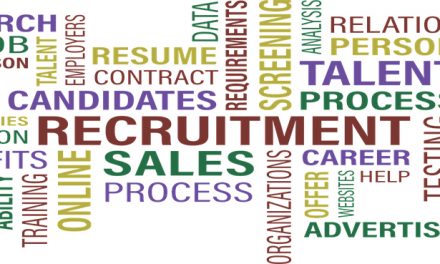Healthy Cashflow = Healthy Business
The most essential function of any business is cashflow.
Without a healthy cashflow, you cannot pay staff, suppliers or bills, the business very quickly grinds to a stop.
So why do so many businesses suffer with poor cashflow?
- Poor payment terms with your customers, and late payers
- Deficiencies in turnover, not hitting breakeven
- Overspending
- No awareness of your numbers
Just one late payment from a customer can be enough to make a business feel the pain of not having enough cash in the bank to pay their bills.
Not a nice position to be in when you have staff to pay and suppliers who won’t release goods until their bills have been paid.
Being up against the wall with a shortage of cash is not a strong position for any business to be in and can lead to a series of weak decisions to alleviate the short-term pain.
Borrowing money, early payment discounts, ignoring suppliers all work as short term fixes when you can’t pay the bills, but these actions often come full circle to add to next month’s cashflow problems unless a cure to the cause of the problem is found.
Many businesses do not have an accurate method of measuring and monitoring their cashflow, so rely on a few rough sums and a fingers-crossed approach.
So what can we do to make sure we are managing our money correctly and we’re not going to fall into the despairs of feeling broke?
Agree Favourable Payment Terms with our Customers
Do you take a deposit when a customer decides to buy with you? Are you paid upfront?
Pre-payments mean that you can run your business on other people’s money without having to use your own. Assuming you don’t spend it before you’ve earned it, this is a sensible strategy for running any business and will ensure you never run out of money.
Getting your customer to also agree to strict and timed payment schedules also ensures that you can pay your debts regularly.
Pre-arranging this as part of the terms of your sale is easier than trying to negotiate payment terms after the sale has been made, and if done correctly can be used in situations where your customer has negotiated any kind of discount with you.
If you have persistent late payers, uplift your price by 5% from the outset and offer a 5% early payment discount at invoice.
Chasing your customers for payment that is rightfully yours is perfectly acceptable in theory, but in reality, around half of your customers will probably make you wait, and chasing them for a payment is not a comfortable conversation to most people.
Relationships can be damaged by these uncomfortable phone calls.
If your payments are regular, setting up standing orders, direct debits or Go-Cardless payments take out the personal intervention of these transactions and this option should be considered as a priority wherever possible.
Better Payment Terms with Suppliers
If you can negotiate better payment terms with your suppliers, you can run your business on your customers money.
An additional 30 days on your suppliers’ terms will ensure that any late payments from your customers do not put you under pressure to have to find the funds from elsewhere to pay your suppliers.
The longer you can defer payment, the stronger cash position your business will be in and this will result in you making stronger decisions.
Invoice Factoring
If you are dealing with bigger corporations, 90 or 120 day terms are often commonplace.
While these terms are a killer for small businesses, the type of deal you can arrange with these corporations often results in a higher sale price.
Negotiating your own terms is favourable but getting a big organisation to change its payment system is like moving a mountain.
Your bank will most likely offer a factoring service where they will pay you around 90% of the invoice amount straight away and they will wait the 90 or 120 days to be paid.
Other external companies will also offer this service so shop around if considering this option.
Uplifting your prices by the amount the factoring companies charge, (usually around 10%) ensures that you get the deal and you get paid on time.
Make Payments Easy
Writing a cheque, finding an envelope, buying a stamp, going to the post box are all obstacles!
Make it easy for your customers to pay you.
Once they have agreed the sale, they want you to make everything easy for them.
Set up your payment system so they have your bank details and sort code on every invoice and can make a bank transfer. (BACS)
Or if you take card payment, use software that sends a link or button on your invoice for them to press to make an easy online card payment.
PayPal, Stripe and other credit card companies will have the software you can use to add these buttons to any online invoicing system such as Xero or Sage.
Beware that they will also charge around 3%, so make sure you’ve built that into your prices.
3% does not sound a lot, but on a £100,000 a month turnover, it’s £3000, not insignificant.
Making your payment requirements as clear and easy as possible and communicating this in a friendly way from the point of sale is essential on every sale.
Save A Cash Cushion
Make it a company goal to save 3 months of cash in a side account.
If your total outgoings are £25,000 per month, then a cushion of £75,000 in an account will ensure that you always have money to pay your bills and never have to make weak decisions because you have run out.
Over Deliver on Production
Exceed your production/sales whenever possible to ensure that you are generating more profit.
Profit is future positive cashflow.
Be Vigilant with your Spending
Keeping your costs down are essential.
Creating more growth and profit should be kept in line with as little increase in additional spending as possible.
Question every extra spend that you think you have to make in your business and try not to make snap spending decisions. Take some time to reflect and make sure you really do have to make that purchase.
Monthly Meetings & Evaluations
Get together with someone once a month and look at your profit & loss statement, spreadsheet or bank statement and scrutinise every cost, and ensure every invoice has been paid to you.
This business system should be your number one priority, it’s easy to miss an invoice or not notice someone has overcharged you, so create a system that double checks both incoming and outgoing cashflow.
Talking through your money every month with others is a great sanity check on your pricing, spending and forecasting.
Use your Budget
Use the budget we discussed in previous articles to set exactly what you’re going to be spending each month and do not deviate from it.
Good financial discipline will ensure good cashflow.
Use a Cashflow Forecasting Tool
Most accounting software will have some kind of bolt-on that can be used to forecast where your cash levels are going to be in the next month, quarter and year.
While these tools can be useful for forecasting long term, often a simple spreadsheet can be more accurate and effective.
Simplifying and automating this process is not always advisable.
If you really want your finger on the pulse, do it manually using Excel or Google Sheets and reconcile your bank statement weekly or monthly depending on the sensitivity of your cashflow.
When times are tough, you may resort to using this sheet daily!
Knowledge is power when your cashflow is tight, worrying can make things much worse and making weak decisions will inevitably follow.
Know your numbers inside out and avoid making any decisions that might help you short term, but give you a bigger headache in the future.
A good cashflow forecasting spreadsheet will require you to enter every transaction that comes in and out of your bank and will tell you exactly what funds you’ll have available in the coming weeks and months.
If you enter all future predicted income, your overdraft facility and all expenditure accurately, it will show you where you are going to crash, or where you are going to be sitting pretty.





